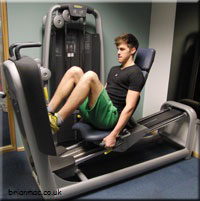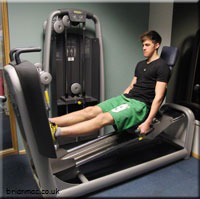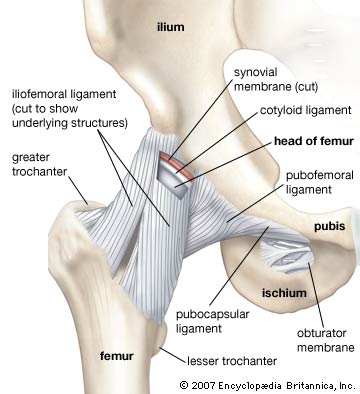Strength training for young rugby players
It has been an ongoing debate, whether or not it is advisable to allow young rugby players, or athletes for that matter, to engage in strength or resistance training.
Firstly, lets get through all the myths and misconceptions that you have been fed up until now. There is no factually reported, evidence based research that suggest’s that youth resistance training has negative effects on adolescents. Ok, lets breakdown that last statement, to ensure you literally understand what I mean by youth or adolescent resistance training. Firstly adolescents are those individuals who have undergone the process of puberty, and exhibit the physical characteristics of maturation specific to their genders. That simply implies that they start developing secondary sex characteristics.

However heavy resistance training in prepubescent kids, could possibly prove harmful to them. This is viewed in the light that younger kids will not be able to cope with the intensity and volume of training typically exhibited in adult programs. Important to understand that this does not mean that young kids cannot “strength train”, as this understanding encompasses other avenues of muscular fitness, such as increasing their muscular endurance and resiliency through bodyweight exercises. This might not yield major increases in their benchpress or squat 1RM, but it will have a considerable effect on their underlying soft tissue structure (muscle, tendon and ligaments), as well as increased bone mineral density. This obviously has one obvious offshoot: increased strength = decreased risk of injury, due to a greater resielency to penetrating forces, especially those experienced in the game of rugby.
The greatest incidences of injury during any child focused activity, has been through poor instruction, lack of supervision, as well as poor program design (Jones et al Phys Sports Med 28 2000).
Rugby is a game which involves high speed collisions, quick reactions, awkward bodily placements and long periods in which the muscular system is under strain, therefore it is only logical that one engages a strength training program to offset the chance of getting injured. When dealing with younger rugby players, don’t disregard this element of strength training because of unfounded myths, and rather focus on the guidelines of program design to ensure your future Boks are well prepared in the early years to ensure that their full potential is one day reached.
The process of strength training at a young age is not that difficult at all, but just keep in mind that the child, adolescent and adult, function and conceptualise activities in completely different ways. Thus what might seem appropriate for an adolescent might not be for a child, in terms of its instruction, its complexity and obvious overall physical effect.
Ok, so we now know why all ages can engage in strength training, and since we want to see how it can relate to rugby performance in the early and late phases of childhood, what exactly are the parameters we need to ensure are maintained when strength training young rugby stars.
For the most part, schoolboy rugby players, and most notably development players, are only exposed to proper strength training instruction at the pre-elite stage, when talent identification programmes, and scouts essentially want to sign them up into their fraternities, with the prospects of future fame. This is all well and good, but it initiates a devastating process of fast tracking younger players into the big leagues, without an indepth look into either their training or playing history. It is often that we hear of sub 20yr players, been drafted into the ranks of super rugby, and only recently has the various South African unions, taken heed to exercise scientists calls to ensure athletic preparation in the younger years to promote career longevity and success. With this said there has been a number of initiatives aimed at preventing injury at the youth level, through programmes such as Bok Smart, which aims to educate coaches at all levels, of the importance of conditioning for the prevention of injury.
So what guidelines am I talking about? For one, it is important to note that the phase of greatest trainability in youth athletes is 14-18 months after their growth spurt, which is roughly around 14yrs for boys. However you must ensure that individual differences are accounted, and instead base their readiness for foundational resistance training with weights on their biological age (when they start maturing physically)
The accompanying table outlines the guidelines for strength training, through the phases of physical maturation, for rugby players
Age | Mode of training | Length of training | Specific focus elements | progressions | Equipment | Reasons/concerns |
<12 | General preparation/ non specific motor development, muscular endurance | Non specific but 2-3 days a week of activities that strengthen all major muscle groups | Bodyweight exercises, fun yet challenging games that involve gross muscular movements, eg, gymnastics | Low grade resistance training and technique development | Medicine balls, climbing walls, light dumbbells, climbing ropes etc | Hormonal and musculoskeletal system not ready for complex or high intensity training |
13-15 | Strength training introduction | Low volume, and lasting about 12-18months | Technique development, circuits to build work capacity, core strength and ligament strength develepmont | If biologically mature may begin some hypertrophy (muscle development training) | Dumbbells, barbells, medicine balls, strength machines for technique and R.O.M | Increased bone density improved through strength modalities, aided by spike in testosterone levels |
16> | Training broken up into specific phases – general strength (GS), specific strength (SS) and competitive preparation (CP) | GS – 4x wk
SS – 3-4x/wk
CP – 2-3x/wk
GS and CP in the initial 1-2yrs and then intro of CP when ready | General anatomic adaptation and hypertrophy and | Transition to max strength, power and plyometrics, match specific strength | Barbells, dumbbells, medicine balls, and later Olympic bars, strongman equipment, kettlebells | Intro into the pre-elite phase. Increasing levels to invoke performance gains alongside prehabilitation techniques |
As we can see from the table, the progressional guidelines are fairly precise, and will induce an overall training response in athletic ability from childhood, through their rugby and positional specific training prowess that will ultimately succeed the phases mentioned in the table.
As a last note remember kids enjoy movement not precision, adolescents are impressionable and at a precarious age where they are either made or broken in terms of vital physical preparation, and lastly this preparation can later be honed into a well oiled and physically significant player in the latter years. So the take home message is ensure timed progression and understand that Rome wasn’t built in a day, and neither will your physical prowess as an athlete, without major flaws and cracks that will start to show, through a lack of proper training. Author:
N. Orson (bachelor of Sport Science)
References:
Essentials of Strength Training and Conditioning, Baechle & Earle, 2008
ACSM Guidelines to Exercise testing and Prescription
Strength Training for young Athletes, Fleck & Kraemer









